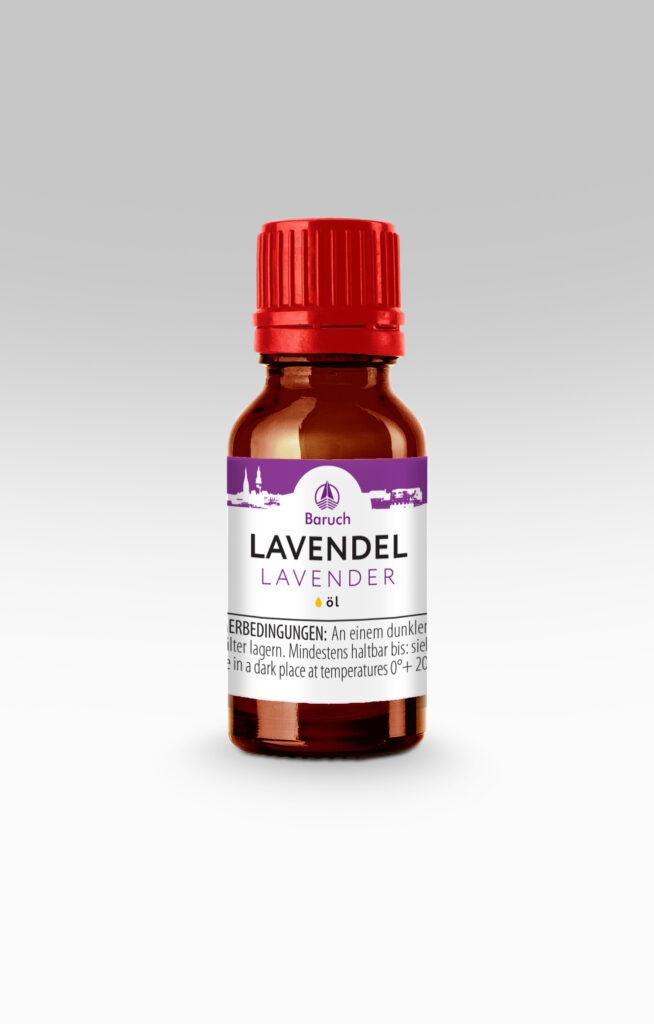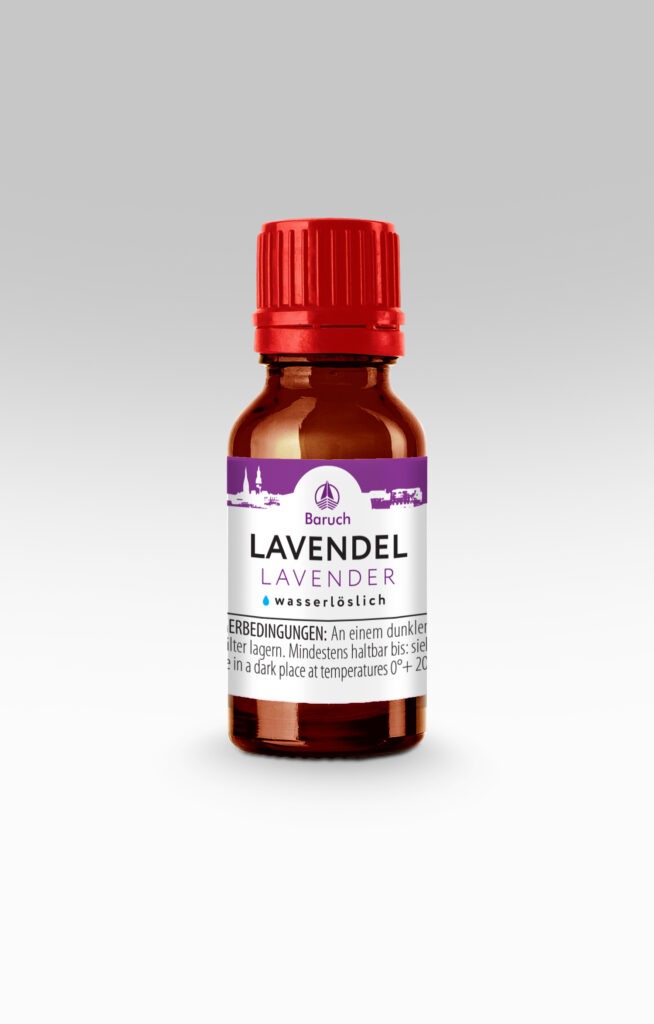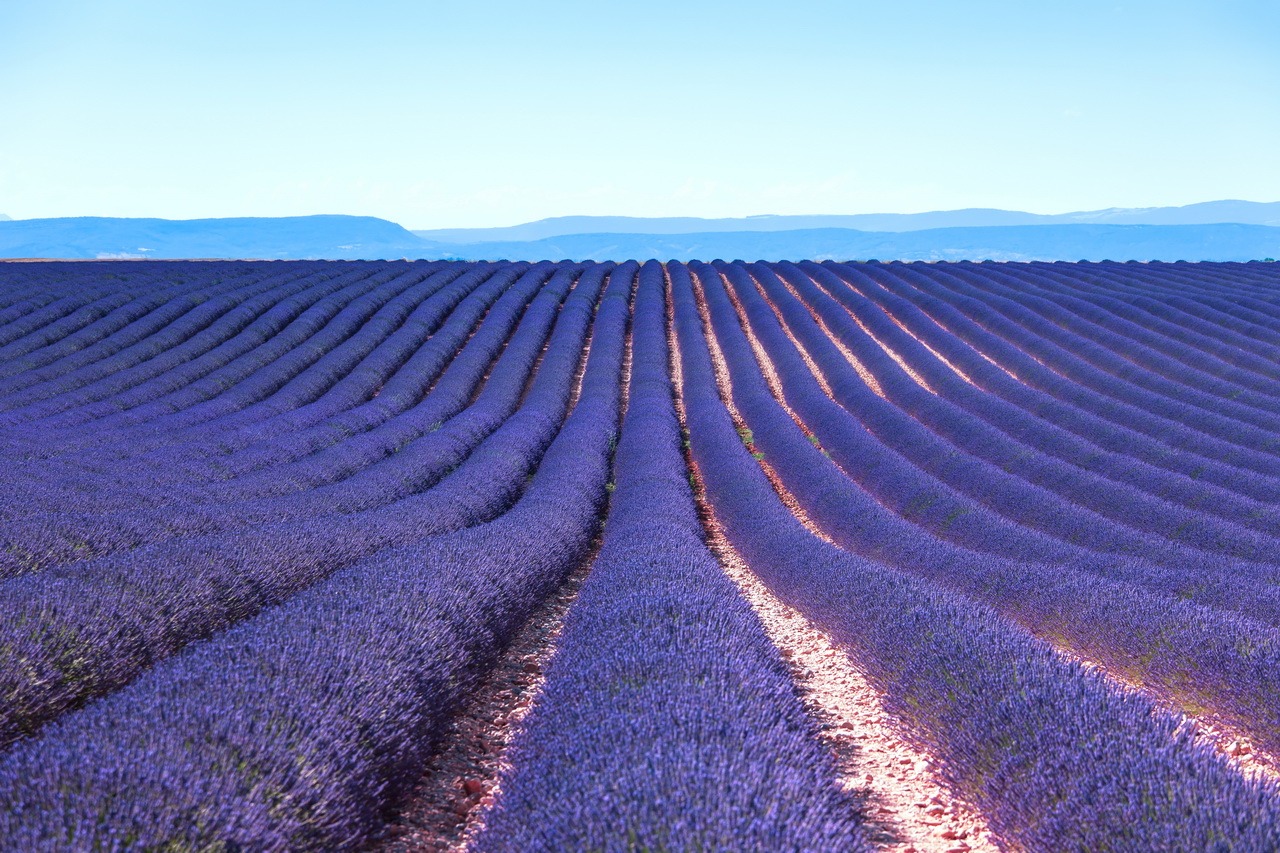Lavandula angustifolia, formerly L. officinalis, is a flowering plant in the family Lamiaceae, native to the Mediterranean (Spain, France, Italy, Croatia etc.). Its common names include lavender, true lavender or English lavender (though not native to England); also garden lavender, common lavender, and narrow-leaved lavender.
The inflorescences of the lavender have been used as a raw material for the extraction of essential oils in countries on the Mediterranean coast since ancient times. Essential oil and extracts from lavender inflorescences are traditionally used in medicine, cosmetics, and the food industries. In everyday life, lavender inflorescences are used as an insect repellent. Lavender is currently one of the most widely grown essential oil plants.
Concentrated 100% CO2 extract from lavender is a translucent oily liquid of brown color, a light greenish or reddish tint is possible. The smell is pronounced, characteristic. When diluted sufficiently, it is identical to the scent of fresh lavender flowers. Microemulsion based on CO2 extract from lavender is a viscous, opalescent liquid of yellowish-brown color with a characteristic and very strong odor. When mixed with water or aqueous-alcoholic solutions, the microemulsion enables optically transparent pseudo-solutions to be obtained.
The biological activity of natural lavender extracts is determined by the presence of L-linalool esters, terpene compounds, coumarin and herniarin, as well as a fairly wide range of unsaturated fatty acids.
The compounds that make up the CO2 extract of lavender are effective for neurasthenia and palpitations, but are particularly good in inhalers for flu infections, rhinitis, laryngitis, and bronchitis. On the basis of the CO2 extract of lavender, highly effective preparations for the treatment of rheumatism, bruises, dislocations and wounds can be produced.
CO2 extracts and CO2 microemulsions of lavender can be used in traditional culinary recipes for sauces and fish dishes in Spanish, French and Italian cuisine. Microemulsions based on lavender CO2 extract enable the production of original non-alcoholic and alcoholic beverages.


Chart 1. The main components of the CO2 extract of lavender
| NAME | CONTENT IN% OF THE AMOUNT OF VOLATILE COMPONENTS | EFFECT |
|---|---|---|
| Linalil acetate | 48 | Carminative |
| Linolol | 25 | Anticonvulsant, bactericidal, antispasmodic |
| Santals | 2,9 | Anthelmintic, stimulating, hyposensitive |
| β-caryophyllene | 2,9 | Is used in perfume compositions, in fragrances for soaps and cosmetics |
| Lavandulil acetate | 2,3 | Effective against fungi, mold and bacteria. Perfume scent. Effective repellant |
| β-Farnesene | 2 | Used as a fragrance in perfumery |
| Terpinen-4-ol | 1,9 | Expectorant, bactericidal, antiallergenic, antiasthmatic |
| Coumarin | 0,7 | Anticoagulant, antispasmodic, sedative, anti-psoriasis agent |
| Guerniarin | 0,3 | Pain reliever, cardiac stimulant, dilates the blood vessels |
More than 90 compounds with biological activity have been identified in the CO2 extract of natural lavender.
In cosmetics, lavender CO2 extract is valued as an effective brightener and for the care of mature skin. Stimulates blood circulation, works well as an anti-cellulite supplement, improves the condition of the scalp, stimulates cell renewal, tones.
The CO2 extract from its lavender flowers can be used as a raw material for the manufacture of perfumery products and as a natural fragrance in cosmetics.
Recommended for use in cosmetic emulsion products for the care of mature and tired skin, for combating acne and comedones, for cleaning and tightening pores
CO2 extract from lavender can be used in concentrated form, in the form of oil solutions, as well as in the form of microemulsions.
Microemulsions made from lavender CO2 extract are a promising ingredient in various soft drinks, especially sodas. In particular, it was a lavender-based drink that some time ago became the winner of the international soft drink competition in Moscow, and the recipe for this drink was developed by Galina Filonova, who is one of the creators of the popular “Baikal”.
Little known fact: Although the recipe for the drink “Coca-Cola” is kept a secret, many researchers believe that it contains lavender essential oil.
In addition to lemonades, the microemulsion of the lavender CO2 extract is an excellent additive in dairy products of all kinds and especially in fermented dairy products, to which it tastes good and is added to these both individually and as part of aroma and aroma compositions.
Lavender combines perfectly with sweets in terms of taste and is therefore an interesting and promising ingredient for the production of confectionery and ice cream – but at the same time not overused. Both CO2 extracts in native form and microemulsions can be used for these purposes. Fillings, glazes, as well as all kinds of muffins and biscuits, both based on and with the participation of lavender, will sound very fresh and unusual.
Another way of using lavender that is little known in our country is its use as an ingredient in the bakery industry – although in many other countries, and especially in France, it is hard to surprise anyone with lavender rolls. These are well known and very popular there. In Russia, lavender has established itself very well, there are plantations all over the south and especially many of them in the Crimea – these are local raw materials, there are many of them and they are of excellent quality. But, as has been customary since the Soviet era, lavender is mainly used to repel moths and as an additive in washing powder – its potential is now much greater.
Finally, one more little-known fact – lavender is an excellent ingredient for flavoring tea. As such, it is best used in a composition with other popular ingredients such as mint and basil, with which it combines well in taste and smell.
Chart 2. Application rates, recommendations for the use and storage of lavender CO2 extract
| Food usage rates | Item А100: 0.002% (20g per ton) Water-soluble microemulsions EMA1: 0.1% (1l per 1000l or 1ml per liter) |
| Application rates in cosmetics | Item А10: 1-3% Item А100: 0.1-0.3% |
| Recommendations for use | It is recommended to add CO2 extracts in the final stages of preparation, in the cooling phase of the end product. |
| Storage Instructions | It is recommended to store CO2 extracts in a closed container in a cool room and avoid direct sunlight. |
| Use in dietary supplements | Application in cooking | Application in cosmetics |
| Stimulates the performance of the brain and heart, improves their blood supply, relaxes, relieves muscle spasms, treats neurosis, increased anxiety and insomnia. Strengthens the immune system, eliminates chronic fatigue. Disinfects, eliminates moths and mosquitoes. Helps to normalize blood pressure, restores hormonal balance. Accelerates the healing of wounds and burns. Improves memory. Antioxidant. Has regenerating properties. Relieves productive cough. | In western Europe they are added to sauces, soups and salads. In fillings for braised and fried bananas. Recommended for flavoring cakes, muffins, cookies and some breads. Sugar, honey and coffee can be flavored. Mixed with garlic and rosemary, it can be used to marinate grilled fish, chicken and vegetables. | Improves regeneration, heals, stimulates cell renewal. Anti-inflammatory, antimicrobial, cleans pathogenic microflora. Antioxidant, improves microcirculation in the capillaries. Tones, refreshes the skin, moisturizes. Normalizes the water-fat balance of the skin. Helps with eczema, dermatitis, psoriasis. |
Historical reference
The Mediterranean, Canary Islands and India are considered the birthplace of lavender. Currently, the largest lavender plantations in terms of area are located in the French province of Provence, and the traces of the beginning of the use of this plant are lost somewhere at the beginning of human history. Lavender was already known in ancient Egypt and the ancient world also knew and revered it. The ancient Romans used lavender to smoke out premises and prevent epidemics by making fires in front of their homes (they say it helped). Lavender was also widely used by the Romans in their famous baths and for washing and hand washing, hence the modern name (lavare means “to wash” in Latin).
From the Middle Ages to modern times, lavender was incredibly popular – it was used as an antiseptic, medicine, laundry detergent, and perfume. And even as a popular love potion. The combination of lavender with rosemary, which is now considered a classic, was only discovered in the Middle Ages – perfumes based on lavender and rosemary were for a long time leading in the popularity of the aristocratic ladies of that time.
Lavender came to Russia in the mid-18th century when it was first grown in Astrakhan. Lavender was introduced to the Nikitsky Botanical Garden in 1813. During the 20th century, the popularity of lavender grew, first in the Russian Empire and then in the USSR and peaked in the 1980s when the area of lavender plantations in Crimea alone was over 2,000 hectares.
